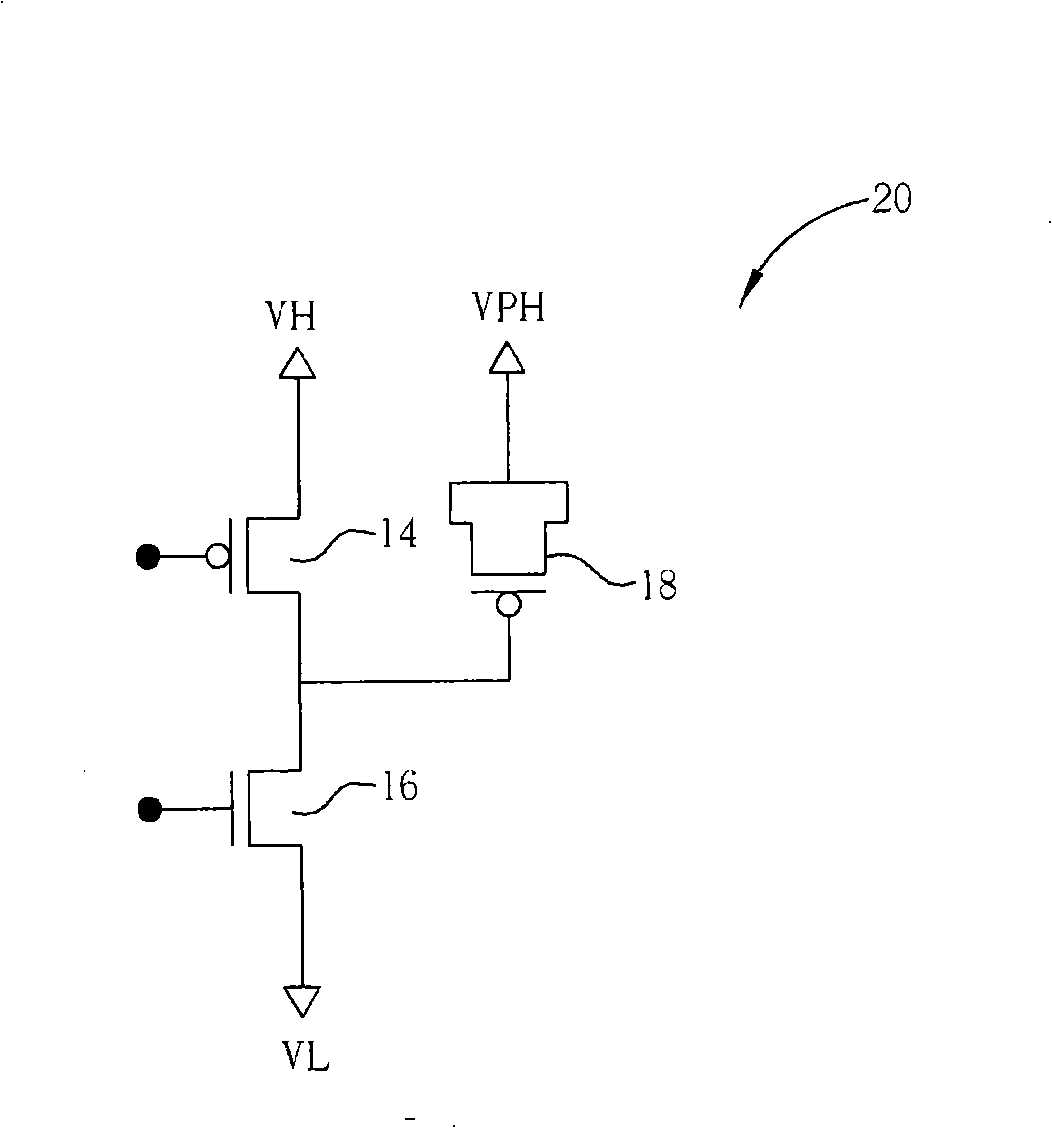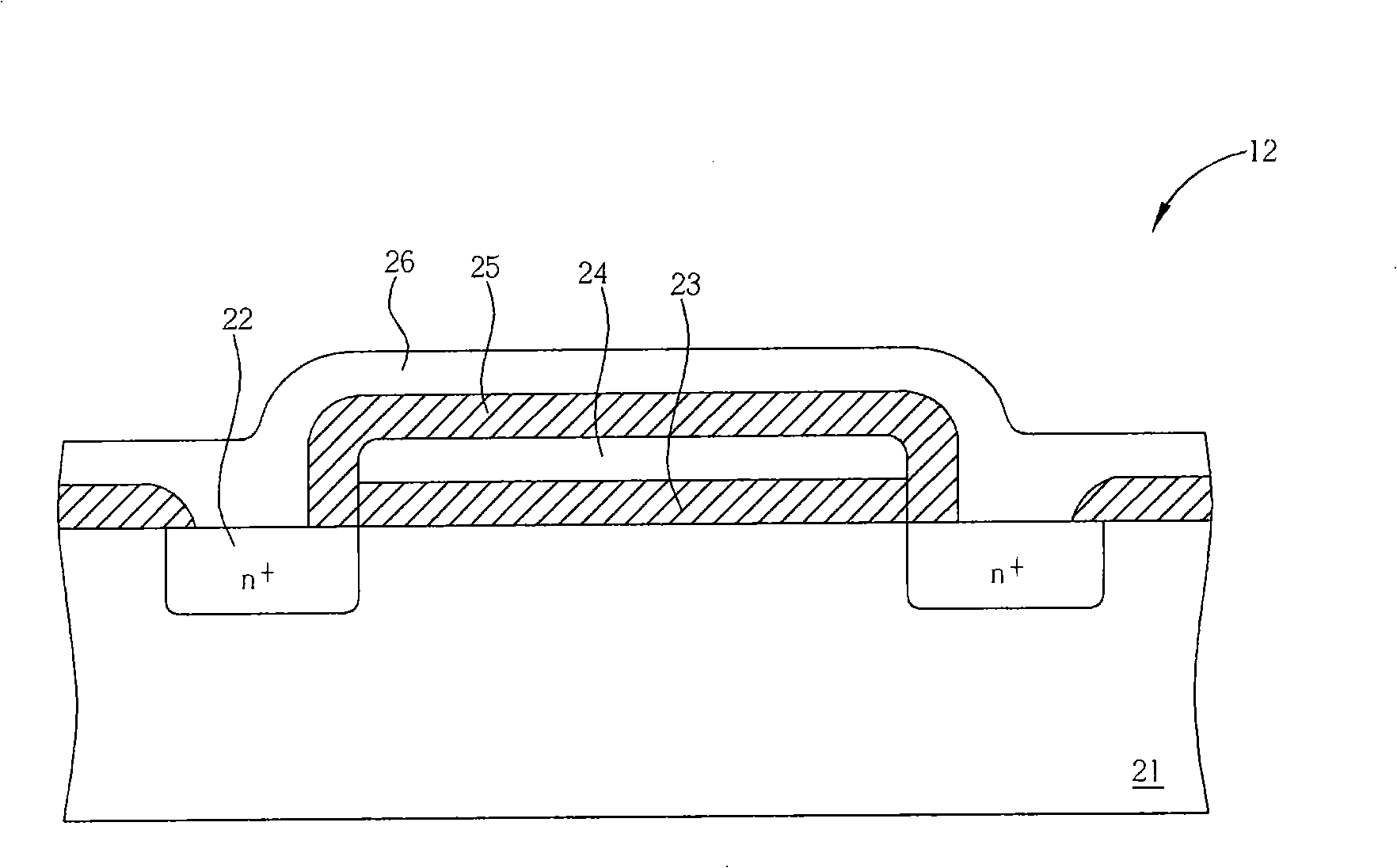Inverse fuse wire and memory cell without ability to cause non-linear current after fusing
A non-linear current and storage unit technology, applied in the direction of electrical components, circuits, electric solid-state devices, etc., can solve the problems that the sensing circuit cannot correctly detect whether the storage unit is programmed, and the reliability of the one-time programming memory.
- Summary
- Abstract
- Description
- Claims
- Application Information
AI Technical Summary
Problems solved by technology
Method used
Image
Examples
Embodiment Construction
[0033] Please refer to Figure 4 , Figure 4It is a cross-sectional view of the antifuse 30 according to the first embodiment of the present invention. The antifuse 30 includes an n-type substrate 31 , two p+ doped regions 32 , a p-type channel 37 , a dielectric layer 33 , a conductive layer 34 , an insulating layer 35 and a wire 36 . Two p+ doped regions 32 and a p-type channel 37 are implanted from above the n-type substrate 31 to form in the n-type substrate 31 . The dielectric layer 33 is silicon dioxide and formed on the n-type substrate 31 to isolate the n-type substrate 31 from the conductive layer 34 . The conductive layer 34 is polysilicon formed on the dielectric layer 33 . The insulating layer 35 is silicon dioxide and is used to isolate the conductive layer 34 and the wire 36 . The wire 36 is a metal wire, and is coupled to the two p+ doped regions 32 through the contact window. A first end of the antifuse 30 is a conductive layer 34 , a second end of the anti...
PUM
 Login to View More
Login to View More Abstract
Description
Claims
Application Information
 Login to View More
Login to View More - R&D
- Intellectual Property
- Life Sciences
- Materials
- Tech Scout
- Unparalleled Data Quality
- Higher Quality Content
- 60% Fewer Hallucinations
Browse by: Latest US Patents, China's latest patents, Technical Efficacy Thesaurus, Application Domain, Technology Topic, Popular Technical Reports.
© 2025 PatSnap. All rights reserved.Legal|Privacy policy|Modern Slavery Act Transparency Statement|Sitemap|About US| Contact US: help@patsnap.com



